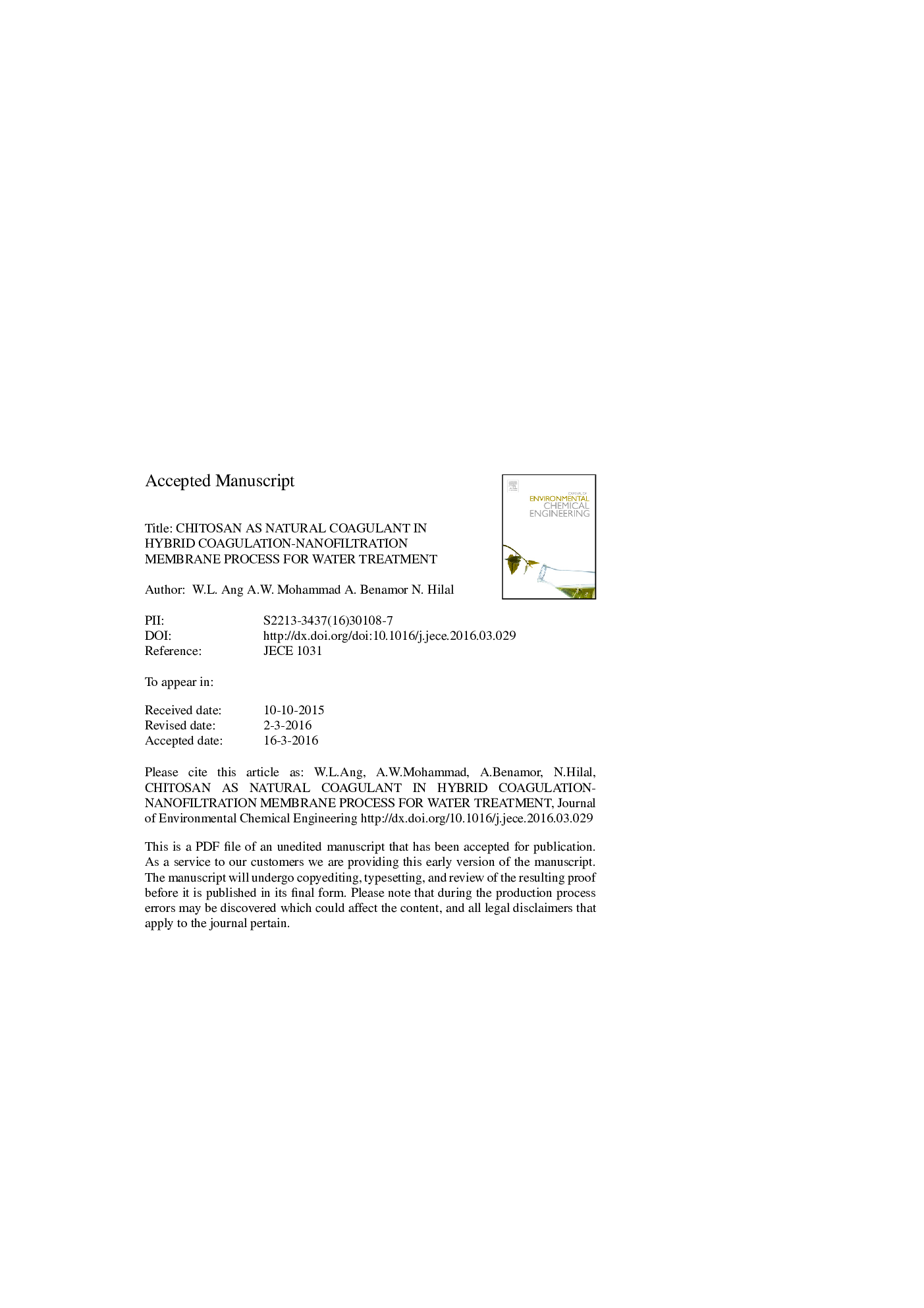| Article ID | Journal | Published Year | Pages | File Type |
|---|---|---|---|---|
| 4908457 | Journal of Environmental Chemical Engineering | 2016 | 19 Pages |
Abstract
Water treatment industries are exploring the possibility to use environmental friendly chemicals and to discover the potential of advanced treatment technology in order to achieve sustainable development. Hybrid coagulation-membrane process has been introduced and proven to be a reliable water treatment process. In this study, the potential of chitosan as natural coagulant in hybrid coagulation-NF membrane process was studied. Three synthetic humic acid (HA) solutions with different ionic strength and composition will be used; without salt (Set 1), with NaCl only (Set 2), and with NaCl, CaCl2, and NaHCO3 (Set 3). Our findings indicated that gradual flux decline for Set 1 can be related to the continuous accumulation of neutral charged particles (pH 4.2) on the membrane surface. Formation of compact foulant layer due to further charge suppression of the foulants by dissolved ions (Set 2) resulted in severe membrane flux decline. When the pH of Set 1 and Set 2 supernatant solutions were increased to 7, fouling has been resolved due to the presence of strong electrostatic repulsion between the foulants and membrane. During the initial filtration process for Set 3, the flux has remained constant due to the strong repulsion between negatively charged foulants and membrane (pH 7). It was followed by severe flux decline which could be attributed to the effect of concentration polarization. Hence, this study highlighted that the impact of natural coagulant on the membrane process should be systematically studied in order to prevent unnecessary loss due to the incompatibility between both processes.
Related Topics
Physical Sciences and Engineering
Chemical Engineering
Chemical Engineering (General)
Authors
W.L. Ang, A.W. Mohammad, A. Benamor, N. Hilal,
